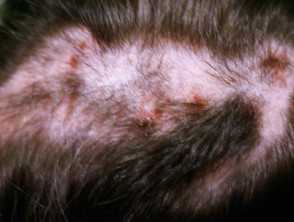
15 Jan Trichotillomania Can Have Serious Psychological Impact on Children
MedicalResearch.com Interview with:

Dr. Diaz
Lucia Diaz, M.D., is chief of pediatric dermatology, dermatology residency associate program director and assistant professor of medicine and pediatrics at Dell Medical School. She is also co-director of the dermatology-rheumatology combined clinic at Dell Children’s Medical Center.

Dr. Jaquez
Sasha Jaquez, Ph.D. is a pediatric psychologist at Dell Children’s Medical School/Dell Children’s Medical Center and specializes in seeing children with chronic medical illness, including skin disorders.
MedicalResearch.com: What is the background for this study?
Response: Trichotillomania (TTM) can be an extremely disabling chronic condition that impacts the psychosocial development of children.
It is classified by the Diagnostic and Statistical Manual of Mental Disorders (DSM-5) as an obsessive-compulsive disorder, where a person recurrently pulls out hair from any region of their body resulting in hair loss. Recognizing this disorder and being informed of treatment options allows medical providers to correctly diagnose and intervene early in the disease course. We reviewed the psychosocial impacts of pediatric trichotillomania and the current evidence-based interventions used in the population.
MedicalResearch.com: What are the main findings?
Response: Families and children affected by trichotillomania can experience significant impairment in social and academic functioning, which increases vulnerability to bullying and social isolation. Having this condition can also lead to anxiety, depression, and stress that can subsequently exacerbate pulling. Treatment options for trichotillomania include cognitive behavioral therapy (CBT), pharmacological management, and other combination treatments. Habit reversal training is a type of CBT that has shown efficacy in the treatment of trichotillomania. It should be conducted by a CBT-trained provider (psychologist, psychiatrist, etc.) and consists of weekly sessions until the hair pulling has significantly reduced. There is limited data on pharmacologic management of TTM in children suggesting behavioral therapy serves as the first line treatment until further evidence arises. Oral N-acetylcysteine has been reported to help adult trichotillomania with limited data in children making it a possible treatment option given its low-risk side effects.
Children who meet criteria for anxiety or depression may see improvement in TTM by treating these comorbid conditions with traditional medications such as SSRIs. Education about trichotillomania and family support are important in the management of trichotillomania.
MedicalResearch.com: What should readers take away from your report?
Response: Trichotillomania can have serious psychosocial impact on children. Dermatologists and other medical providers should make the diagnosis and review management options promptly in order to minimize the effects of this condition on the patient. Cognitive-behavioral therapy is an important treatment for TTM.
MedicalResearch.com: What recommendations do you have for future research as a result of this work?
Response: Clinical trials evaluating pharmacological treatments in pediatric trichotillomania are needed. Further studies on the natural history of pediatric TTM, risk factors, and variables impacting quality of life would be also useful.
No relevant conflict of interest to disclose.
Citation:
Henkel, ED, Jaquez, SD, Diaz, LZ. Pediatric trichotillomania: Review of management. Pediatr Dermatol. 2019; 36: 803– 807. https://doi.org/10.1111/pde.13954
ABOUT PEDIATRIC DERMATOLOGY:
The official publication for the Society for Pediatric Dermatology (SPD), Pediatric Dermatology is a peer-reviewed bimonthly journal that captures leading research in the field of children’s skin, hair and nail disorders to promote skin health across the United States and aid the development of new treatments for pediatric patients.
[wysija_form id=”3″]
[last-modified]
The information on MedicalResearch.com is provided for educational purposes only, and is in no way intended to diagnose, cure, or treat any medical or other condition. Always seek the advice of your physician or other qualified health and ask your doctor any questions you may have regarding a medical condition. In addition to all other limitations and disclaimers in this agreement, service provider and its third party providers disclaim any liability or loss in connection with the content provided on this website.
Last Updated on January 17, 2020 by Marie Benz MD FAAD
